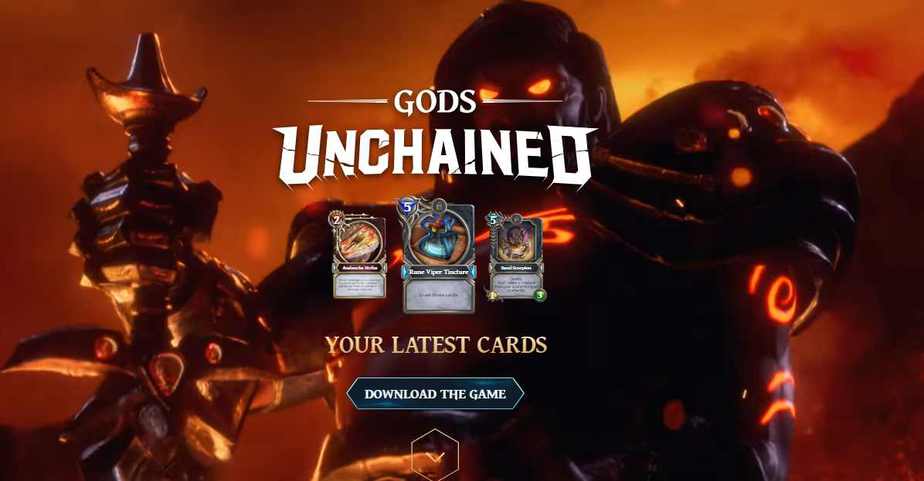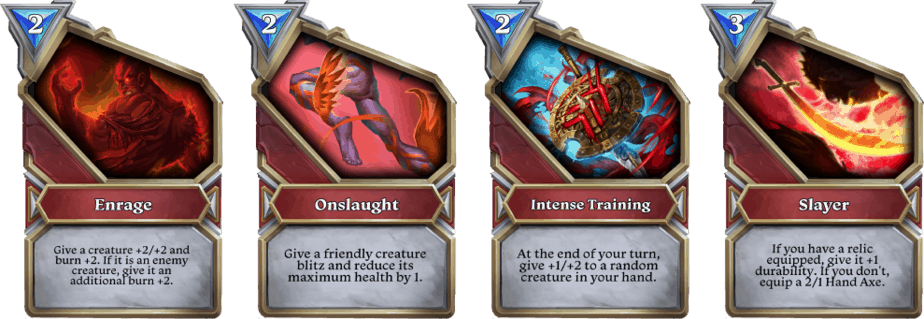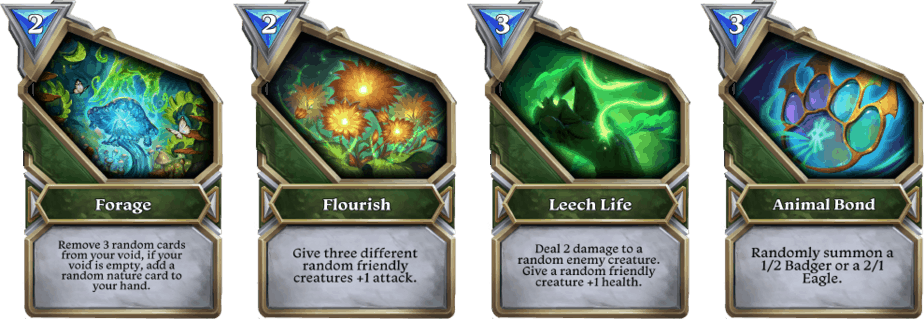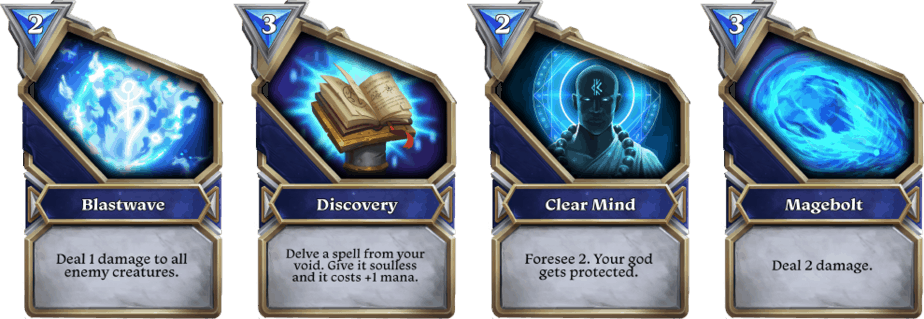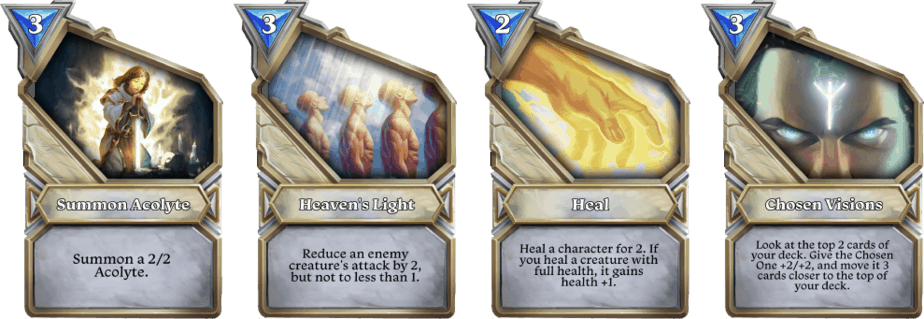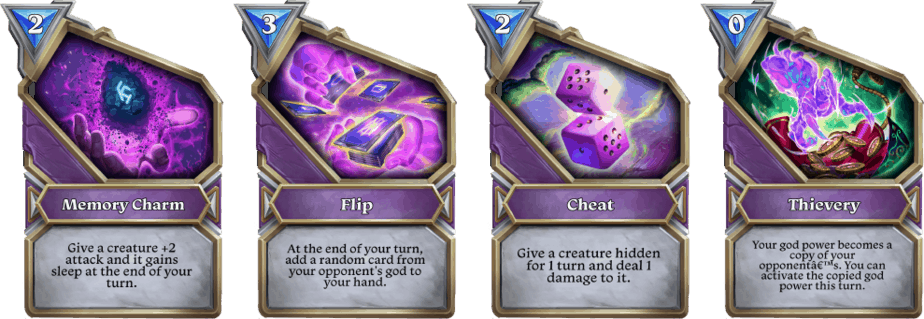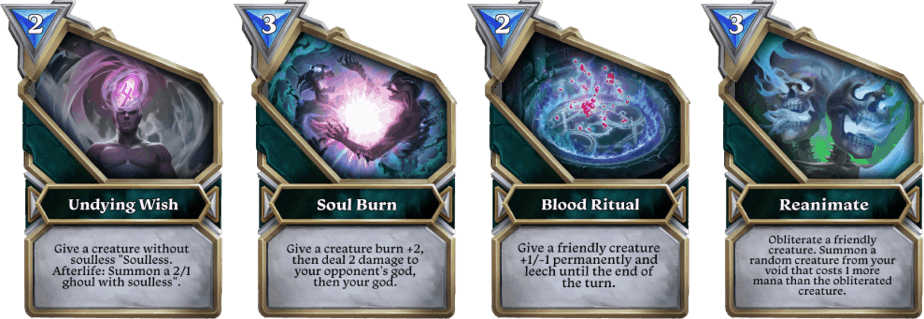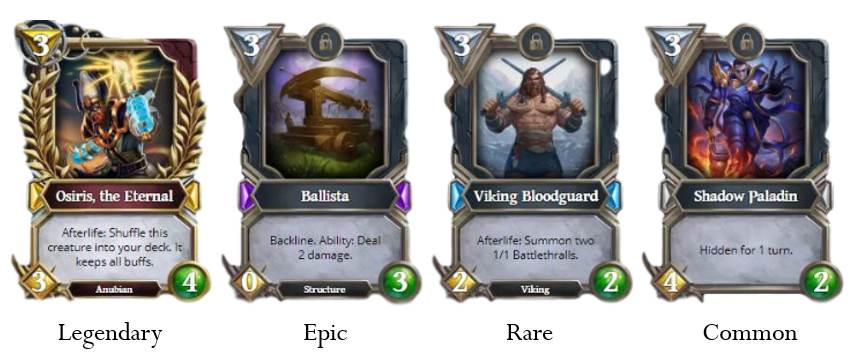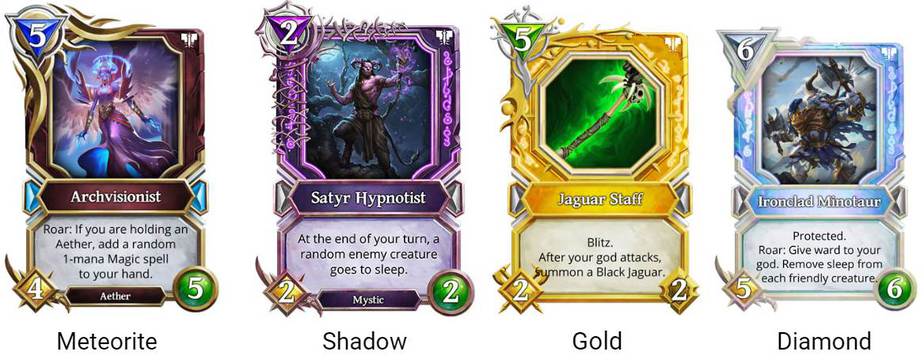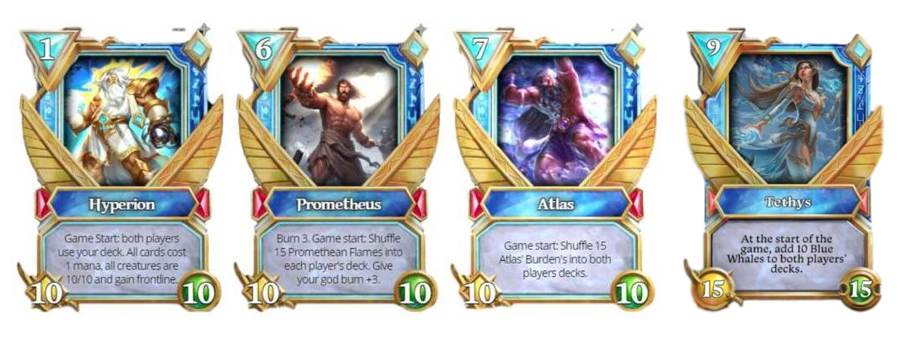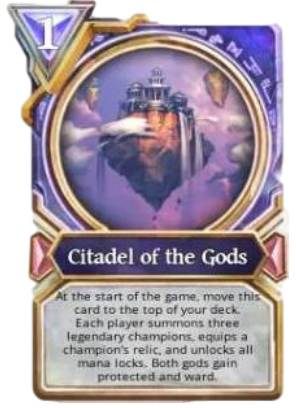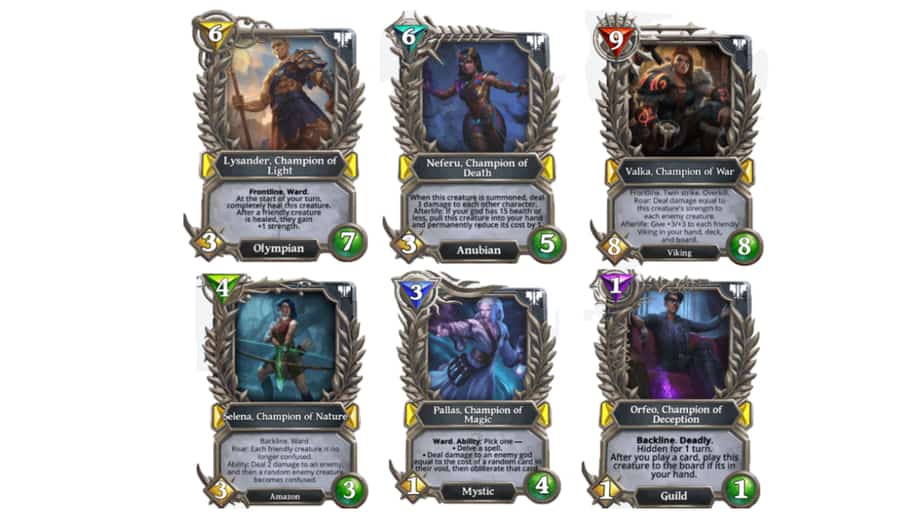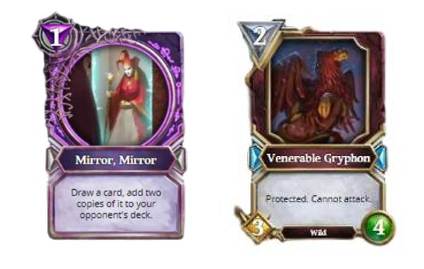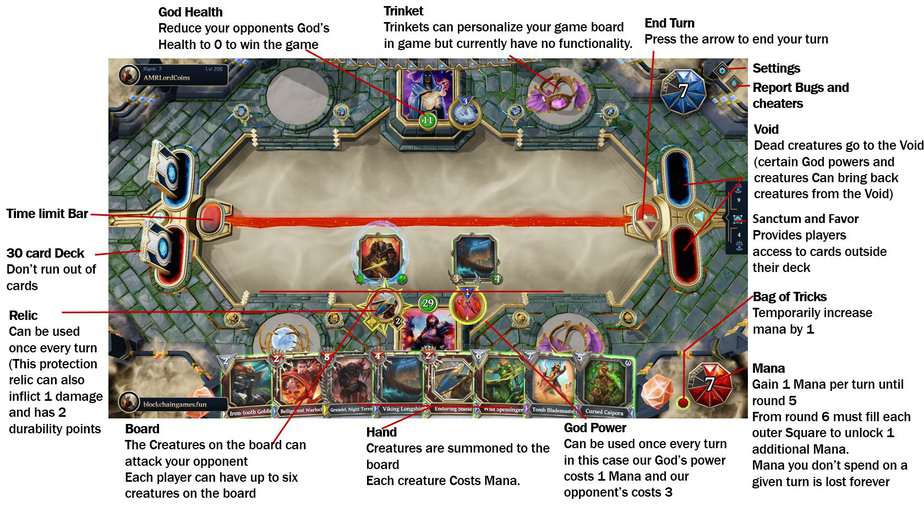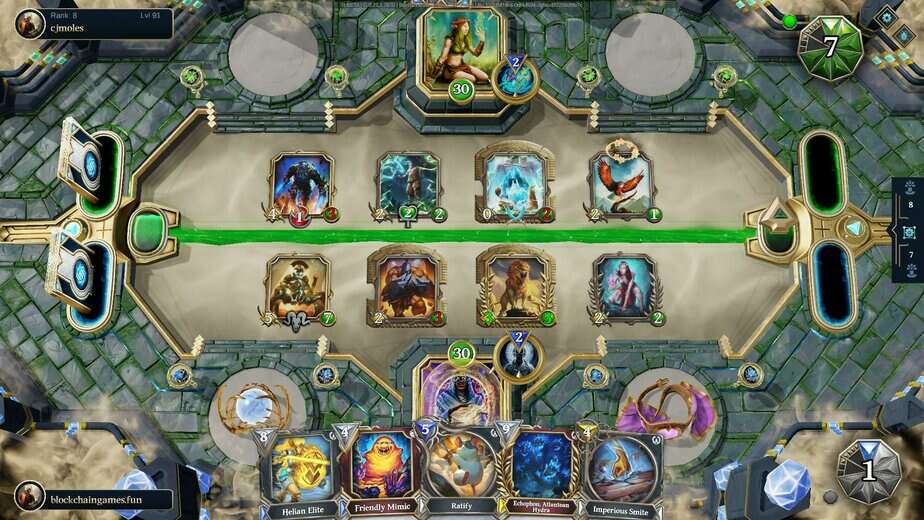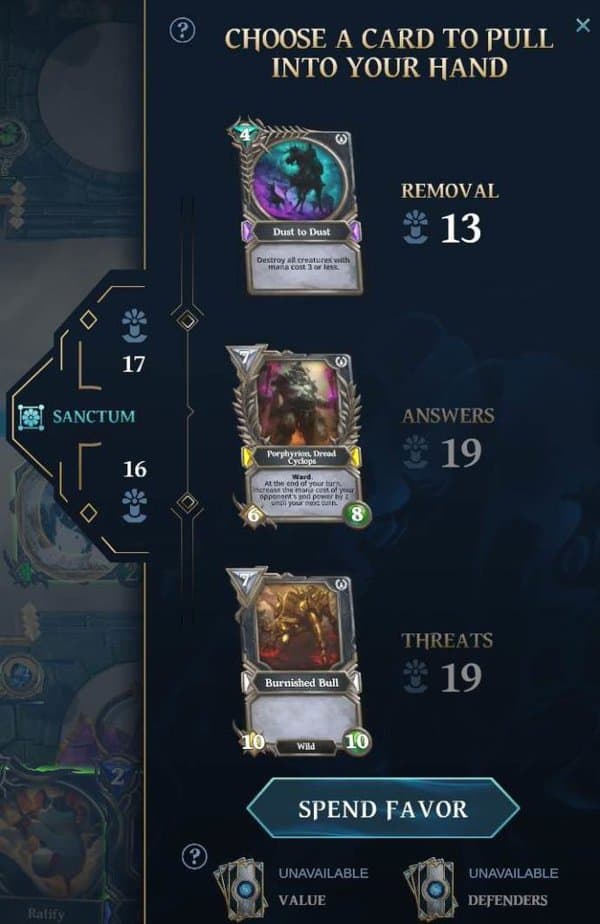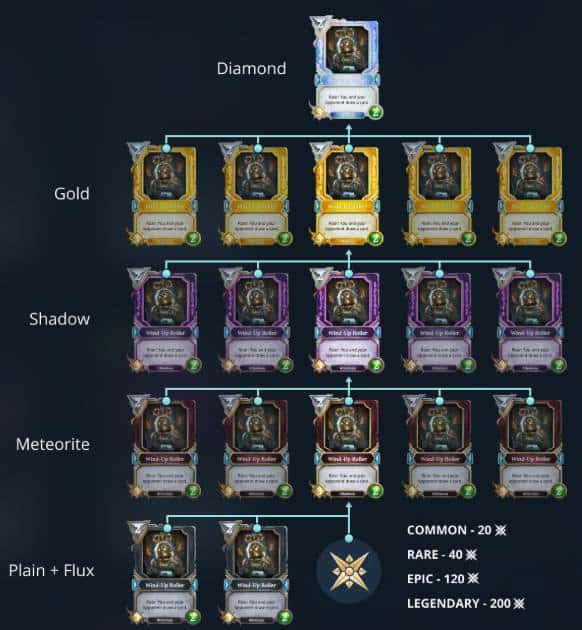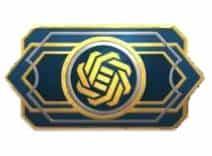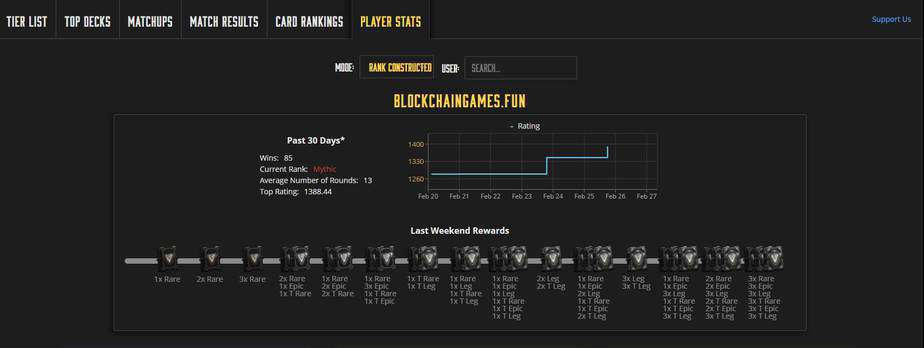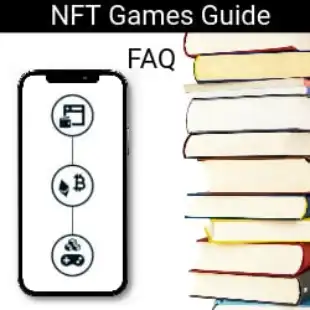Gods Unchained review update – February 2020
After over 1000 matches, I am updating my Gods Unchained review. This review includes my take on the game, as well as info and tips for new players. You can now earn Ethereum playing Gods unchained with no prior investment.
Introduction
Gods Unchained is a decentralized digital trading card game that shares very similar concepts with popular games like Hearthstone and Magic The Gathering. In contrast to those trading card games, Gods Unchained uses blockchain technology, so now players can actually own their cards and trade them with other players outside the game. Despite being a relatively new game in the TCG and the blockchain gaming space, Gods Unchained graphics and gameplay is just as good, if not better than similar, established TCG games.
Gods unchained vs. Hearthstone and Magic the gathering.
Hearthstone lets you collect cards, but the essential element of trading is absent. In Gods Unchained players have true ownership of the cards. The cards are unique on the blockchain, which makes them valuable and tradable. Players can sell their collectible-cards for Ethereum, and Ethereum has a real dollar value. Those features make the game similar to physical collectible card games like Magic, where collectors sometimes keep rare cards as investments or sell them for money. But unlike physical collectibles, cards on the blockchain are impossible to fake and reproduce.
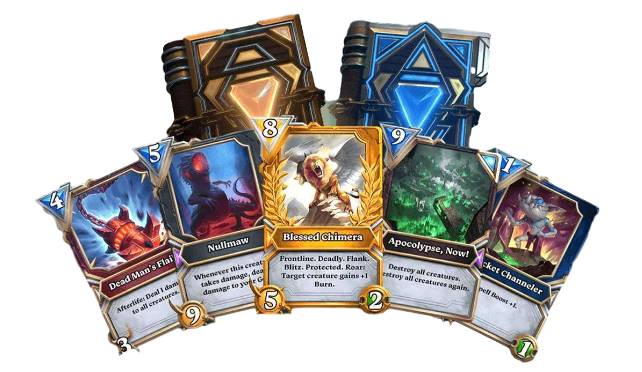
Gameplay
Hearthstone and MTG players will experience a short learning curve because the principles are very similar. If you are new to trading card games, Gods Unchained is an excellent start because you will be able to enjoy and experience a great classic TCG with all the advantages of card ownership on the blockchain. The core mechanics are simple enough for new players to learn, but there is enough complexity to master and keep you interested for the long run.
Classic TCG rules
Like many other popular trading card games, before you start a game, you must select a god and a deck of 30 cards. Each God has a different set of cards, and all decks have access to a shared pool of neutral cards. You can have up to two copies of the same card in your deck and one copy for legendary cards.
The actual game plays out in as turn-based duel between two opponents, where Players have a limited amount of mana crystals to perform spells or summon creatures and relics to attack their opponent and reduce his health to zero.
Game modes
Gameplay modes include Solo and Player Vs. Player modes.
A short tutorial mode will let you learn the basics and earn a few cards before battling players in the arena. You can then play a few practice-rounds against the AI or challenge another player in an unranked game until you are comfortable enough to transition to the ranked constructed gameplay.
In a Ranked constructed game, you play against other players with a similar rating. When you win matches and level up, you receive Rare core packs, and for every ten levels you will receive Epic core packs.
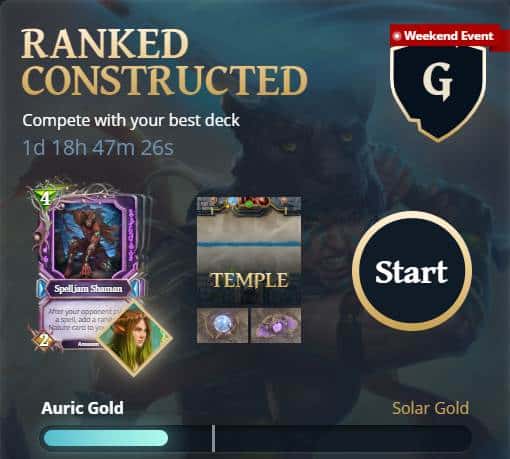
[update 08/20] You can directly challenge another player to a private match. This long-awaited feature will let you casually play unranked games against your friends. It also opens new possibilities like hosting friendly tournaments, which can be done using 3rd party apps like Challonge or Batterfly.

Earn Core cards at the weekend event
Every weekend players can compete against each other and get bonus prizes based on their achievements. The higher the rank, the higher the reward.
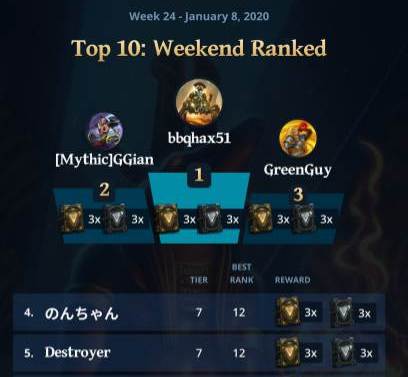
While there is no in-game tutorial, there are some well-written guides and a youtube channel with all the info you will need to get started. check out the official video to learn all the basics:
The Gods
You have six Gods to choose from, and every God has unique powers and a set of cards, forming a unique strategy and specialization. Gods Unchained team gave each God distinct characteristics and its own style for deck building. The missing part is some kind of story behind those gods. Unlike Hearthstone, which has the entire Warcraft universe behind it, God’s unchained is a fairly new game, so there just isn’t much lore around yet.
[Update 2/2020] As of 2020, a new story begins to unfold with the narrative behind Gods Unchained.

Newcomers might want to start with Thaeriel God of light. Thaeriel is simple and fun to play. Here is a quote from one of the lead designers about Thaeriel:
“Designing Thaeriel’s God Powers was an interesting challenge. We wanted them to be flexible, flavorful, and simple. We expect a lot of new players might gravitate towards light, and we didn’t want to bog them down with complex mechanics. These powers have come out great, though. There’s a little bit of everything in there for all types of players! I’m excited to see what everyone does with The God of Light.”
James Wakeham, Lead Game Designer
God powers
God powers are unique abilities that are attached to each God. Using your god power does not require a card, and you can use it as a way to spend your mana efficiently when you run out of creatures or spells. You will want to choose your God’s power, depending on what deck you are playing and take into account the God you are playing against. There have been quite a few changes and re-design of the Gods’ powers over the last few months, and the development team is continuously changing and re-balancing those powers.
The Cards
Build a deck or use a starter deck?
Deck-building demands a lot of strategic thinking as players must choose from hundreds of cards that they want to play and build a deck of thirty cards. It requires players to evaluate the power of their cards and the synergies between them. As you dive deeper into Gods Unchained and trading card games, you will want to learn about deck-building strategies such as Aggro, Control, or Combo decks. But if you are a new player, you can start playing right away with the pre-built core starter decks. If you want to build your own deck we included the official deck building guide video below:
Card Basics
There are three Cards types: Creatures, Spells, or Relics.
Creatures are combatant cards, As shown in the diagram, the mana is at the top left corner, attack on the bottom left, and health points are on the bottom right.
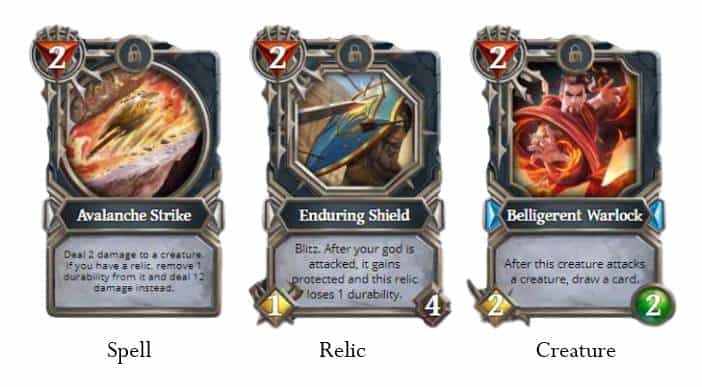
Spells have instantaneous magical effects. They have many use cases but are excellent for counter-attacking your opponent’s moves.
Your God can wield relics and use them for attack and defense. Just be aware, when you use a relic to attack a creature, you are actually sending your God to battle, so your God can also take damage in the process. Relics have durability points instead of health points where durability drains on every use.
Core set vs. genesis or Trial of the Gods sets
When you login for the first time, you will receive a few free packs of core set cards. Those cards are not on the blockchain, and you can’t sell or trade them for cryptocurrencies. You will continue to acquire core set cards as rewards for leveling up or as prizes at other points in the game. Additionally, core cards might reset to zero when the game goes live, It already happened on October 2019, when the marketplace was launched players lost all their hard-earned core cards.
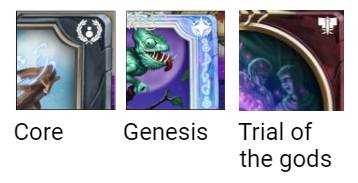
Genesis and Trial of the gods sets contain limited edition cards backed by NFT (ERC-721 Tokens) on the Ethereum blockchain. Players have full ownership of those cards. they can sell them for ETH, and they cannot be reset or taken away.
Why do we need a core set?
Some cryptocurrency games will not let you evaluate the game until you buy an item or make a deposit. Steem monsters, for example, requires an initial deposit of $10 because all the cards are registered on the blockchain. God unchained combines the core cards system so players can play for free and keep playing for free if they don’t wish to invest money and purchase cards.
Card classes
The color on the side of the card represents scarcity. The scarcity classifications are Common, Rare, Epic, Legendary, and Mythic. Legendary cards bring the most potent and significant effects in the game. Mythic cards are one-of-a-kind and are not allowed to participate in most tournaments.
Card Shine
Another factor affecting the rarity of the card is called Shine. Shine is the graphical design of the card. It doesn’t have any influence on gameplay but represents the scarcity of the card and affects its price. The Shine colors are Meteorite, Shadow, Gold, and Diamond.
Legendary diamond cards are, therefore, the rarest and most expensive card types (excluding the Mythics).
Mythics
Mythic cards are one-of-a-kind super rare cards, and only four unique cards are released each year. Mythics will not be allowed in most tournament play, and I feel their main purpose is a marketing gimmick. Nonetheless, they do have a beautiful design, and collectors are willing to pay enormous amounts of money for them. For example, Prometheus was sold late last year for 235 ETH, and Atlas was sold for 210 ETH.
Mythic cards are said to create a mini-game within a match. Unfortunately, I could not find a record of a live game with one of the Mythics, and I assume that they will remain safe for a while in their owners’ hardware wallets.
Champions
Trial Of The Gods introduces champions to the game. Champions are powerful legendary cards with unique attributes and lore. Each champion is also tied to a set of relics and spells. Champions have an important role in gods unchained story.
Useless cards?
Every collectible card game contains several useless or “bad” cards. Gods Unchained is not different, and In fact, the developing team intentionally includes those bad cards as learning tools for newcomers. With a little experience and common sense, you will be able to identify them and keep them away from your deck. A point to consider is that some of those cards seem useless at first, but might work well in combination with other cards.
The Match
board overview
Mulligan
When you start a game, you are presented with a “second chance” or a Mulligan. During the mulligan phase, you can get rid of cards that cost a lot of mana and replace them with different random cards. As a good practice, get rid of cards that cost five or more mana. Those cards will be shuffled back into the deck, and you will be able to play them later in the game.
The unique mana lock system
The Mana system outlines a simple but efficient and original approach. You start with one Mana on the first round and progressively unlock one additional mana after each round until round five. From the sixth round, the mana unlock criteria increases. For example, the sixth mana gem has two locks on it, and won’t be accessible until turn 7. To illustrate this, I’ve included the mana lock pattern in the diagram below.
Try to be mana efficient and spend all your mana each turn. Use the bag of tricks and your God’s power to utilize as much mana as you can every turn.
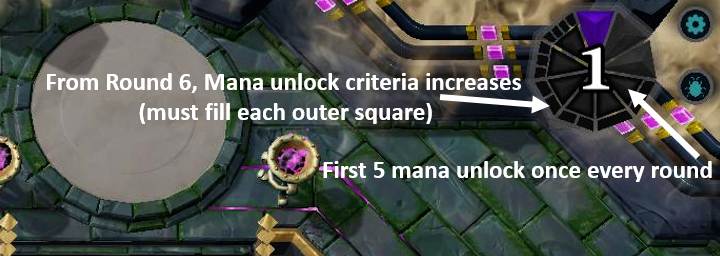
How is Gods unchained Mana system different from Magic the Gathering
The mana lock system approach eliminates what MTG players refer to as mana screw or mana flood. Both are conditions where your hand either does not have enough mana or the right mana color to play spells and creatures or too much mana with the opposite effect.
How is Gods unchained Mana system different from Hearthstone
Gods Unchained Mana Lock system also differentiates itself from Hearthstone’s linear system of one mana increment per turn. This different approach creates new deck-building opportunities because mid-game, 5, 6, 7 mana creatures are not immediately outclassed the next turn and create an incentive to use them towards the middle of the game. Another interesting change is that level nine mana cards become available very late in the game. Those cards are super powerful and can turn the game around, but will need a lot of patience because they are only playable after sixteen turns towards the end of the game.
The new sanctum and Favor system – February 2020 update
The system lets the players spend favor points and pull cards from a shared space called the sanctum. Players gain favor points by attacking their opponent and destroying creatures.
The new feature needs some refining and re-balancing. I have a feeling it will undergo some significant modifications until the final release.
Can you make money and earn cryptocurrency by playing Gods Unchained?
Yes, with the new February 2020 fusing system update, players can now earn Ethereum by playing Gods Unchained with no prior investment.
Play to earn fusing system
Playing the game and winning ranked matches rewards players with core cards and flux points.
You can’t sell core cards, but you can use flux points to fuse two similar core cards into valuable meteorite cards. Meteorite cards can be sold on the marketplace for Ethereum.
At a later stage, you will be able to upgrade two similar cards to a higher and more valuable classed, such as Shadow, Gold, and Diamond.
So now you can finally monetize your playtime.
[Update 8/2020] Fusing has been disabled for a while due to high ETH fees.
Card investment
If you believe that Gods Unchained will become popular like Hearthstone or Magic the Gathering in the future, then demand for limited edition cards (NFTs) will increase. You can start collecting limited edition cards and sell them for a profit.

The yearly tournament
Once a year, Gods Unchained will organize a tournament. The first tournament will be hosted this year with a prize pool of over $540,000. All 20,000 tickets are sold out, and the only way to get one now is by purchasing it off another player or from the Tokentrove marketplace for around 0.025 -0.05 ETH plus gas fees (prices may change).
Transparency and stats
A primary characteristic of blockchain gaming is its transparency. You can view accurate statistics of all the games you played. Follow the best players and see what kind of decks they are using. You can also view the historical price of all the cards.
The company behind gods unchained
- Gods Unchained is run by a company called Immutable. They recently raised fifteen million dollars for development and marketing.
- They seem to have a strong team where some of them used to work at famous gaming companies like EA and Ubisoft, and their website is full of open positions for more developers and designers.
- Game director Chris clay used to work as a director for Magic The Gathering.
Final Verdict – Excellent
Gods unchained is a fun game that can have an appeal to players in the TCG space. It can easily be described as one of those games that are easy to learn but difficult to master.
Gods Unchained is an example of a real game where the benefits of blockchain and item ownership translates to an existing genre. The game features as one of our top collectible card game pick as well as one of the best NFT games for 2022.
Gods unchained
EDITORS REVIEW
THE GOOD
- 100% card ownership. you can trade or gift your cards
- Beautiful art and design
- Fun and engaging
- Play for free
THE BAD
- No campaign mode
- No mobile version
- Fusing has been disabled for a while due to high ETH fees.

